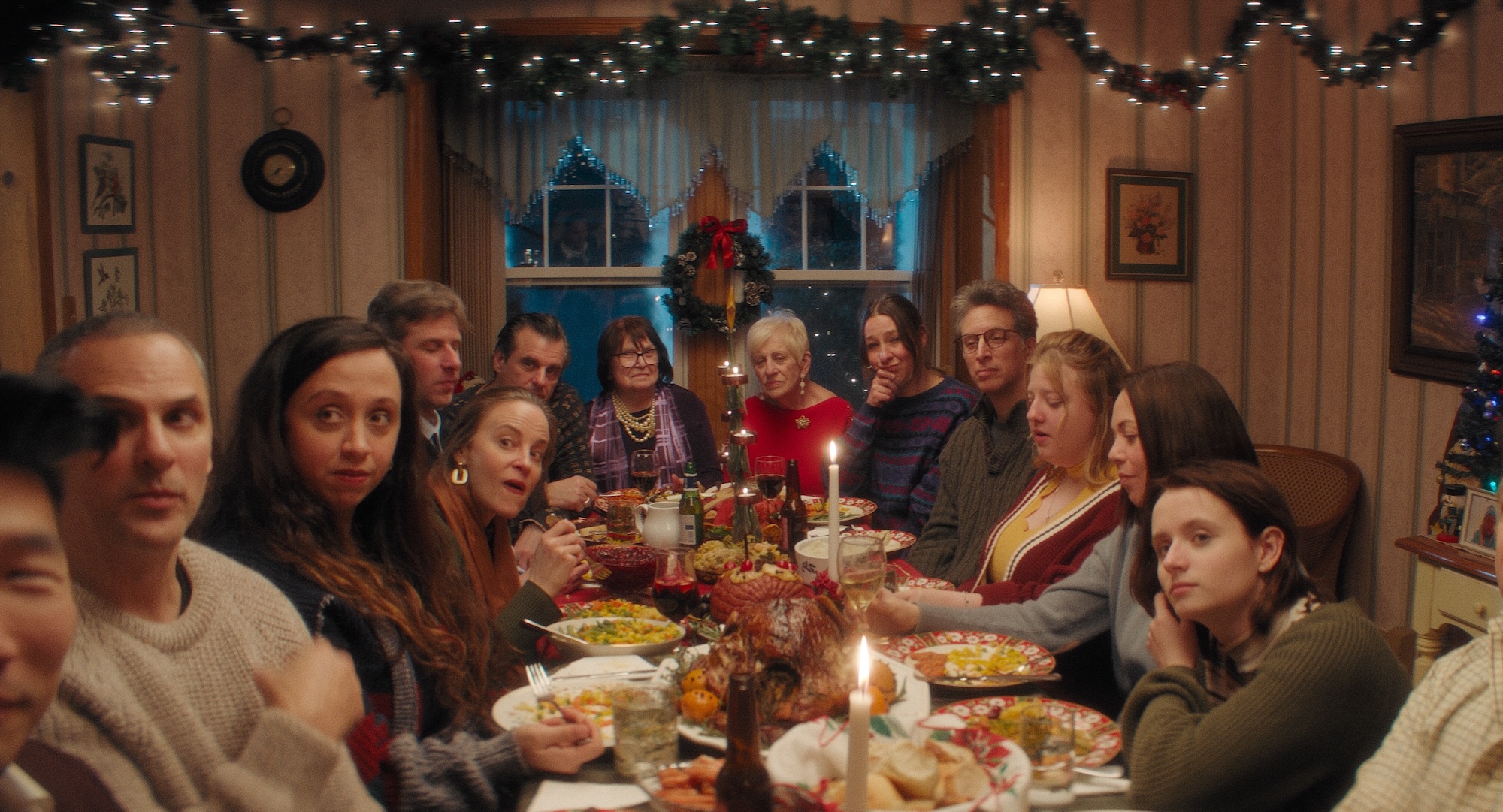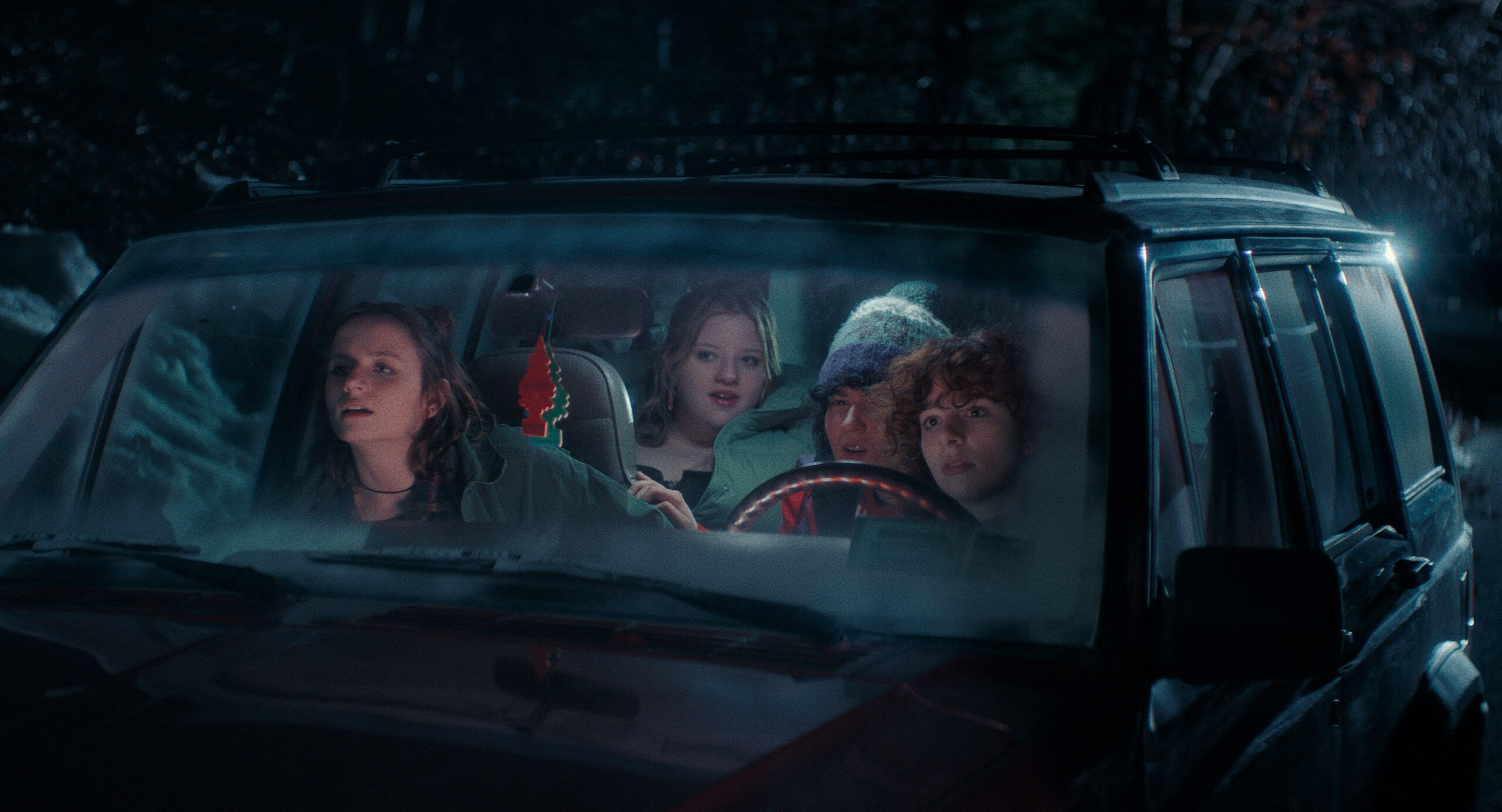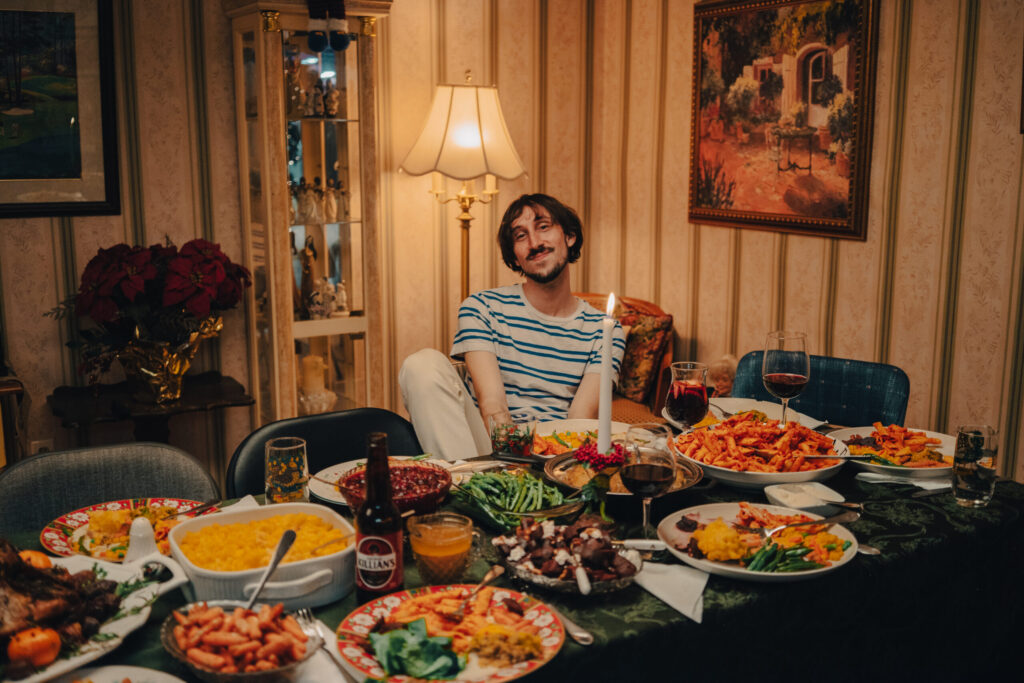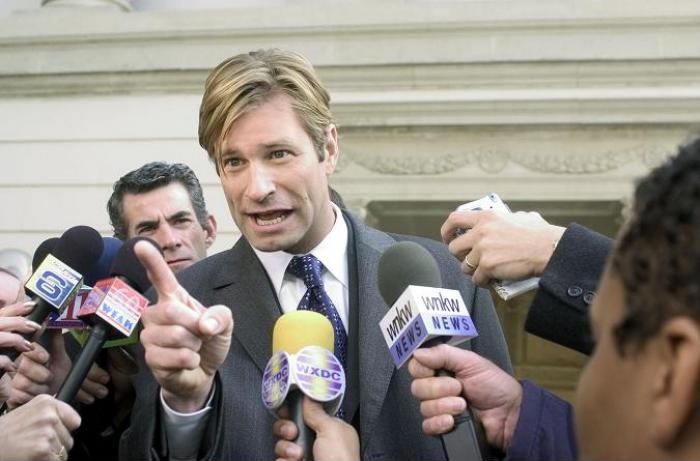Just in time for the holiday season, acclaimed writer/director/producer TYLER TAORMINA is adding his unique spin to the Christmas movie canon with his latest feature, CHRISTMAS EVE IN MILLER’S POINT. As a founding member of the filmmaking collective Omnes Films, Taormina cut his teeth on short films before venturing into award-winning features including his directorial debut Ham on Rye (which premiered at the Locarno Film Festival) and directorial follow-up Happer’s Comet (a Berlinale premiere). As a producer, Taormina’s credits include Jonathan Davies’ Topology of Sirens, Carson Lund’s Eephus, Lorena Alvarado’s Los Capítulos Perdidos, and Alexandra Simpson’s No Sleep Till.
Written by Taormina and Eric Berger, Christmas Eve in Miller’s Point invites viewers into a night in the life of the Long Island Bolsano Family as they celebrate the holiday. Featuring concerned mothers, sentimental uncles, doting aunts, sundowning grandmas, and drunk cousins, plus bored local teens and (also bored) local cops, the tapestry is woven together by a sprawling ensemble cast, including Maria Dizzia, Ben Shenkman, Matilda Fleming, Elsie Fisher, Francesca Scorsese, Gregg Turkington, Sawyer Spielberg, Lev Cameron, and Michael Cera (who was also a producer of the film). Christmas Eve in Miller’s Point premiered at Quinzaine at the 2024 Cannes Film Festival, before going on a global festival tour including Deauville American Film Festival, Filmfest Hamburg, Vancouver International Film Festival, Mumbai Film Festival, Pingyao International Film Festival, and AFI Fest (where it was a SAGindie-sponsored screening).
IFC Films will release Christmas Eve in Miller’s Point in theaters on November 8. We spoke with co-writer/director/producer Tyler Taormina about forming his filmmaking collective, working with teenage actors, and how he got his new tinsel-filled feature to the screen.
——
COLIN McCORMACK: Looking back at when you were forming Omnes Films and getting your career started, were you guys approaching that with a specific mission statement on the types of films you wanted to make?
TYLER TAORMINA: I don’t think Omnes was born with an idea of the types of films we would make. But I think what was inherent to the formation was the way in which we would make films; the production. It was sort of born out of necessity. A few years after college — we all studied at Emerson in Boston — a few of us realized, Oh, no magic producer is going to come around and just give me the money to make my film. Some of us maybe still hope for that. I had the idea of Ham on Rye and I just had to get it out. It was a big formative moment in all of our lives because it was a real indication of, This is never going to happen unless we do it right now in this scrappy way. From that point on, it was obvious that we would be able to make films through our collective support for one another. With that, it just so happened that we could do so on the instincts we had as artists, which would have been immeasurably more difficult to explore in a Hollywood apparatus.
CM: You all kind of alternate as writers, producers, directors. How do you determine which film will go next? Is it simply a matter of which film has the financing in place, or are there other factors that come into play?
TT: We’ve made seven features now and initially, the idea was simply: If you can find the money for the film, let’s go and we’ll follow suit. But since then, these films have become successful enough to garner momentum, whether that be internal or external. It’s become a little bit more strategic where we have to think about how the next three or four films might be produced. It always is going to come down to what gets the greenlight and the money, but now the way we approach financing is much more slate-strategic, which is very exciting for us.
CM: How far back did the initial conception for Christmas Eve in Miller’s Point start to percolate in your head?
TT: About seven years ago, that’s when the script was written. It was conceived shortly after watching my parents’ wedding video on their 30th wedding anniversary. There was this crazy cinematic experience I had that night watching this tape with them that they hadn’t seen since their marriage began. The rituals of life and the way in which family members interact with them and their ability to celebrate or not became very powerful for me. That was where the journey began for this movie.
CM: Is any of that footage actually part of the home movies that the characters watch in the film?
TT: It should have been. Maybe more importantly, some of the actors themselves are watching their own home video footage for the first time ever during the scene. We were filming their reactions.
CM: Did the initial idea always revolve around a Christmas get-together? Did any other types of large family gatherings ever cross your mind?
TT: I think that the wedding moment I mentioned actually did generate ideas for wedding movies. But when Eric Berger, my writing partner, and I started to think about Christmas as a point of memory to explore, I think two things happened. One is that it became this platform to explore ritual, the way we get together, and memory. The other was more specific to Christmas, where we realized that the way we decorate our homes is sort of our declaration that life is worth celebrating and living. We thought that was very beautiful. Because we don’t actually have to do that at the end of the day. There’s no reason, it’s an excess. But when we realize that this excess has a parallel to these memories that we share about this holiday, these extra things in our minds are little details of memory. I think that Christmas became the most fitting vehicle for this project where it’s a holiday of details and a celebration of excess.
CM: Do you think the Christmas angle maybe made it an easier sell to potential financiers? People can grasp what a “Christmas movie” is.
TT: Yeah, I think so. It’s no mystery today that the films that are able to sell and be seen are genre films. I’m not exactly a genre filmmaker, however, I was very happy to incidentally land in a genre space of Christmas. I don’t think it’s just the fact that it takes place on that day that makes it a genre film. I realized that almost all Christmas films have to deal with coming home again or leaving home. This relationship we have with our homes. Also, as Charles Dickens began to show us, there’s a great existential implication of Christmas where we get to open our eyes again to see what’s around us, to not take for granted our time on this earth and our families, and use true gratitude. So I think that it actually is a genre film in these ways.

CM: You and Eric are juggling so many characters in the script. Did you have a master document that tracked the characters from a story perspective or even a family tree perspective?
TT: The whole writing process started with the family tree. Specifically, the incidents that happened in the family maybe 40 years before the film begins, where the patriarch died and how the mother who is in this film, Grandma Antonia’s, parenting changed in lieu of this tragedy. Then how that affected all their other kids and their relationship with the mother, and how that affected those kids’ parenting with their children, and so on. So there was a big psychological snapshot taken of the entire family, specifically of intergenerational traumatic experiences. What’s funny is that we did so much work in understanding these characters and we shared none of it with the actors. It was just on the page.
CM: Obviously you have to fill out all of those characters that you have written. And I heard you mention at AFI Fest that a lot of the casting was you calling friends and asking, “Who do you know? Who has a good face?” Was that true with the up-and-coming actors as well as the established ones?
TT: Yeah, it was true across the board. Obviously, I knew the face of someone like Gregg Turkington, and it was a little more traditional of, Let’s try to get him in this picture. But for the most part, it was an open exploration to find people whose essences spoke to me. People who, I think, have such a beauty that they might not even be fully aware of, and in that gap is a vulnerability and a naivete that I think really speaks to me. So that was the guiding light in gathering all of these faces.
CM: You had backstories that you had written and didn’t share with the actors. So did the characters change much? Was there a lot of freedom given to the actors once it was handed over from the page to them?
TT: I’m the kind of director who doesn’t really impede on their process at all. I don’t even really like to be aware of it. We started these characters with all this backstory, but we don’t share it with them so on the page it’s open for their interpretation. Whether it’s them just being them and emanating themselves, or if they’re actually drawing upon secrets they might have about these characters and what’s going on with them is something that I’m not aware of. But I know that what I’m seeing when I watch them doing their thing, it’s true and it’s real. It just makes sense.
CM: Was there time or budget to have any sort of table read or rehearsal before you had to get everyone into the house and start filming?
TT: No. At some points, it was like, “Let’s get a beer.” And I would be thinking about the notes I wanted to see from them as we’re all hanging out. But really, our approach was there’s a scene where all the characters meet in the foyer at the beginning of the film and they all hug one another; it’s this big, physically affectionate moment between the family. We made that the first thing we shot because we wanted to break the ice. We wanted the people to instantly have the experience like, I haven’t seen you all year. Here you are again. I love you. That sort of triggers a sense — even if it’s a false sense — of familiarity.
CM: This might sound a little cliche, but the house is sort of like a character in the film. I just had to wonder what the location-scouting process was like, and whether that was actually one house or if through movie magic you had a couple of locations that you spliced together.
TT: It’s four houses, all on Long Island. The beauty about it is that three of these houses were actually owned by these matriarchs who died, and their kids who no longer live there had to sell them. And [filming] was the moment in between the death and the sale. So really, what this film is sort of foreboding was the reality of the production. In some cases, we didn’t even want to touch these houses because the production design was so there already, all the history and whatnot. What you see as the majority of the house — the foyer, the living room, the kitchen, the dining room — is one house that was entirely designed by [production designer] Paris Peterson, who did such a brilliant job. It’s become the film of my dreams visually due to the collaboration between [cinematographer] Carson Lund and Paris Peterson.
CM: The movie is so much about memory as you discussed. For visual inspiration, were there memories that you were pulling from or specific films?
TT: I’m really interested in being a nostalgic, even postmodern, filmmaker in the sense that my personal memories are shoulder-to-shoulder with my memories from films and television shows. In my case, it’s a beautiful communication. I don’t confuse them, but they meld together in a very beautiful way that means a lot to me. So yes, there’s a lot that’s drawn from my life, and even relics from my life, and many people in my town’s relics, made it into the production design. However, specific films were for sure on our minds, including Home Alone, which is pretty obvious in the foyer especially; and Christmas Vacation; and Douglas Sirk’s All That Heaven Allows. Those are the three I could think of that were very direct. Then the last is not actually a filmic reference, but a reference to the advertising campaign of Coca-Cola in the ’50s. This birth of Christmas iconography is something that I find very beautiful even though it’s a profit-driven conception [laughs].
CM: How many days was your shoot?
TT: I think 24 or 25.
CM: And you were shooting in the actual New York wintertime? No fake snow?
TT: Okay, so here’s the funny part: We were shooting in the wintertime, but it’s all fake snow. None of the snow is real. Also, I should say, none of the snow is digital. It’s all real special effects. The benefit of shooting in the wintertime is the rosy cheeks and the breath and the shivering and the trees being barren. I am glad we filmed this way. It’s a much better movie filming this way. However, it was extremely cold filming in the middle of the night in February and March.
CM: With the latter half of the film being this escape of the teenage characters out into the town, not only are you working more in the elements but you’re working largely with all young actors. For you as a director, how is it to work with young actors and see them figure out their process along the way? What was that experience like through your eyes?
TT: We talked a little bit before about the spectrum of when actors are bringing themselves or intentionally departing from themselves. For young actors, the way I like to work is to cast far more on the side of them just being themselves. They’re emanating who they are and their acting takes the form of comedic timing or memorizing lines and blocking. But for the most part, I cast these young people because I think they are special. I just want to say that it blew my mind to be with them. We all have a conception of Gen Z and [Gen Alpha] as being a certain way. These kids were, first of all, so intelligent. They were so wise, so sweet and well-intentioned, and so knowledgeable. I found a lot of hope for the future in working with these kids. They were really, really special.
CM: In the writing, was it always the teenage cousins and their friends that got spun off for the latter half of the film? With such a big cast, you could have taken any combination of family members and sent them on their own adventure.
TT: It was definitely always this way. The structure of the story is the reason why I wanted to make it, where it transcends being simply, Here are some lovely memories all together. Instead, it becomes a story of my life, where these memories and hearth of youth and childhood are betrayed as we become older and we deviate from our family identity into our own identity. So I very specifically wanted to make this story turn happen an hour into the film and not the traditional Hollywood 15 minutes into the film. I wanted this family life to feel so lived-in, just as mine was when I was young, before the shock. And I hope it comes as a shock and positive disorientation to suddenly find yourself, after all this family history of our past, in your own world.
CM: Speaking about the structure of the film, because of the ensemble nature and going back and forth between the different storylines, did that give you a lot of freedom in the edit to move things around and fiddle with the film as a whole?
TT: You’d think, but there really is not much leeway. The script was very meticulously composed. It is sort of a house of cards. The reason I say that is because aside from all the simultaneity that is occurring — this character is in this room, so they can’t be in this room over there — there are so many reasons why we structured all the scenes within acts and movements the way they are. Information is being dispelled and emotions are being felt at certain times and beats that I think if you were to remove or even switch one of these things, the house of cards would collapse. As a testament to this, only one scene did not make the film, and it’s a 20-second moment, not even really a scene.

CM: We’ve talked about the visual inspirations, with this classic Christmas, warm, nostalgic look to the film. But the music zags away from the traditional Christmas carols or pop Christmas songs. You use these oldies and doo-wop that keep the nostalgic vibe, but it’s not overt Christmas songs. Could you talk about your inspiration for the music?
TT: The music was with us at the beginning of the writing process. We began the whole journey listening to the soundtrack of the great Kenneth Anger’s Scorpio Rising. It wasn’t clear to me until a little bit later in the process, but the lyrics to these songs became extremely important to me. If you think about it, all these ’60s pop songs are about, I love you, don’t ever leave me, or, I’m so trapped in your spell, I wish I could leave you. These themes, which are obviously about romantic love, when they’re reappropriated to be about the mother losing the influence of her teenage daughter, or about the cousin who can’t seem to extricate himself from the family womb no matter how hard he tries, they become super interesting and super haunting. Not to mention how manic and dramatic these songs really are. I mean, these songs are like cries, but most of all they’re so elegant. That’s exactly what I wanted the form of this film to feel like.
CM: The ’60s vibe of it does harken to the Phil Spector Christmas album, so it fits the holiday theme.
TT: Exactly.
CM: The film has this great sense of Americana and familiarity to me, but you’ve screened internationally at various festivals. Of the ones that you’ve been able to go to, or heard word back from, has the response differed greatly from culture to culture and country to country?
TT: What really surprised me was China. Apparently, the works of Omnes Films, and this film in particular, have been really warmly received in China. They have the Chinese New Year and the Spring Festival and the Autumn Festival, which are like our Thanksgiving and Christmas as the only times a year a family gets together and it’s a big thing. Since there’s so much specific to the American experience here — and let’s be real, Christmas is an American capitalistic expression these days more than anything else — I was interested to see that it could still be felt across cultures. I think there’s something loaded in the majority of societies that when you put a big family in one space, there are so many implications about the self and the family and a conflict of those two things that this film is clearly rooted in.
CM: Any filmmaker hopes that their film has a long life. With a Christmas film, you also have the possibility of it becoming part of someone’s own seasonal tradition year after year. Was that something you thought about in making the film, showcasing traditions while — fingers crossed — your film could become one?
TT: Of course, it wasn’t my intention but it became a little more apparent to me the further we got into it. Specifically, when I watch the film — and I’ve seen it a thousand times — I’m struck by the way characters are introduced into the narrative and, more specifically, the way they leave the narrative. When you’re aware of the last time you see each character, I’ve started to think, Okay, I’ll see you next year. It’s become very eerie in that way. Also, an actor in the film brought up to me that there are probably going to be teenagers out there who are Emily’s age, the main character of the film, watching this film and it’s going to mean something to them. Then some of them will watch it again when they’re Kathleen’s age, her mother’s age. The film, which is about aging, could sort of track along with people’s experiences through their lives. That became so beautiful to me.
CM: To finish up, what’s next for you?
TT: I’m writing a film with my partner called Rise of the Beta Cucks. It’s a high school comedy. And my collective, Omnes Films, is gearing up to shoot our next film, Raccoon, directed by Michael Basta, hopefully, in the spring.
__
Thanks to Tyler for talking to us about CHRISTMAS EVE IN MILLER’S POINT. Learn more about the film at IFC Films’ website.
This interview has been edited for length and clarity.
If you’re an independent filmmaker or know of an independent film-related topic we should write about, email blogadmin@sagindie.org for consideration.




